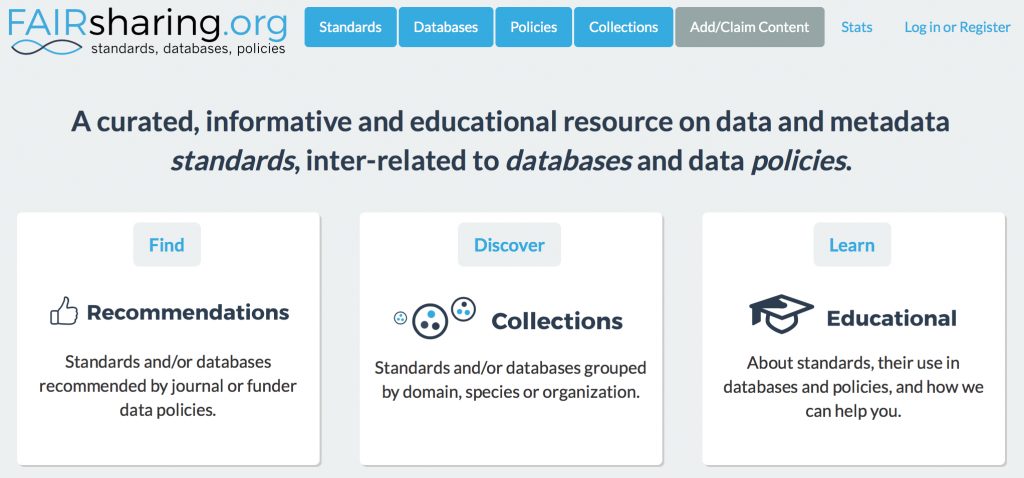The title of this post comes from the site www.crossref.org/members/prep/ Here you can explore how your favourite publisher of scientific articles exposes metadata for their journal.
Posts Tagged ‘PDF’
“Richer metadata makes content more useful”
Saturday, February 16th, 2019Tags:Aaron Swartz, Academic publishing, API, Business intelligence, CrossRef, data, Data management, Elsevier, favourite publisher, Identifiers, Information, Information science, Knowledge, Knowledge representation, metadata, mining, ORCiD, PDF, Pre-exposure prophylaxis, Publishing, Publishing Requirements for Industry Standard Metadata, Records management, Research Object, Scholarly communication, Scientific literature, search engine, social media, Technical communication, Technology/Internet, text mining, Written communication, XML
Posted in Interesting chemistry | 1 Comment »
Re-inventing the anatomy of a research article.
Saturday, December 29th, 2018The traditional structure of the research article has been honed and perfected for over 350 years by its custodians, the publishers of scientific journals. Nowadays, for some journals at least, it might be viewed as much as a profit centre as the perfected mechanism for scientific communication. Here I take a look at the components of such articles to try to envisage its future, with the focus on molecules and chemistry.
Tags:Academic publishing, Acrobat, Articles, chemical discoveries, data, Data management, ELN, Information, Molecules, Narrative, PDF, Publishing, Research, Scholarly communication, Science, Scientific Journal, Scientific method, Technical communication, Technology/Internet, Web browser
Posted in Chemical IT | No Comments »
Examples please of FAIR (data); good and bad.
Sunday, May 6th, 2018The site fairsharing.org is a repository of information about FAIR (Findable, Accessible, Interoperable and Reusable) objects such as research data.

Tags:above site, chemical components, Findability, Human behavior, Information, Information architecture, Information science, Institutional repository, journal data editor, Knowledge, Knowledge representation, Open access, Open access in Australia, Oscar, PDF, recognition software, Technology/Internet, Web design
Posted in Interesting chemistry | 2 Comments »
How FAIR are the data associated with the 2017 Molecules-of-the-Year?
Wednesday, March 7th, 2018C&EN has again run a vote for the 2017 Molecules of the year. Here I take a look not just at these molecules, but at how FAIR (Findable, Accessible, Interoperable and Reusable) the data associated with these molecules actually is.
Tags:Carotenoids, Chemistry, Epoxides, Macrocycles, Organic chemistry, Organofluorides, PDF, Peptides, search engine, search program, search.datacite.org search engine, Technology/Internet
Posted in Chemical IT, crystal_structure_mining, Interesting chemistry | No Comments »
A nice example of open data (in London).
Sunday, March 5th, 2017Living in London, travelling using public transport is often the best way to get around. Before setting out on a journey one checks the status of the network. Doing so today I came across this page: our open data from Transport for London.
Tags:API, chemical databases, City: London, Company: TfL, Government, Greater London, Local government in London, London, Passenger Transportation Ground & Sea - NEC, PDF, Public transport, Route planning software, search engine, Sustainable transport, Technology/Internet, Transport, Transport for London, travel apps, travel data, XML
Posted in Chemical IT | No Comments »
Chemistry preprint servers (revisited).
Tuesday, August 16th, 2016This week the ACS announced its intention to establish a “ChemRxiv preprint server to promote early research sharing“. This was first tried quite a few years ago, following the example of especially the physicists. As I recollect the experiment lasted about a year, attracted few submissions and even fewer of high quality. Will the concept succeed this time, in particular as promoted by a commercial publisher rather than a community of scientists (as was the original physicists model)?
Tags:Academia, Academic publishing, article processing charge, author, Data publishing, Data sharing, food, Grey literature, Open access, Open science, PDF, Peter Murray-Rust, pre-print server, Preprint, preprint server, Public sphere, Publishing, Scholarly communication, Technology/Internet
Posted in Chemical IT | 1 Comment »
Managing (open) NMR data: a working example using Mpublish.
Monday, August 1st, 2016In March, I posted from the ACS meeting in San Diego on the topic of Research data: Managing spectroscopy-NMR, and noted a talk by MestreLab Research on how a tool called Mpublish in the forthcoming release of their NMR analysis software Mestrenova could help. With that release now out, the opportunity arose to test the system.
Tags:Acrobat, analysis software, chemical, Chemistry, City: San Diego, format type chemical/x-mnpub, media type, Mestrenova, non-commercial open software packages, Nuclear magnetic resonance, Nuclear magnetic resonance spectra database, Nuclear magnetic resonance spectroscopy, PDF, public key, Science, Scientific method, spectroscopy, Technology/Internet
Posted in Chemical IT | 3 Comments »
500 chemical twists: a (chalk and cheese) comparison of the impacts of blog posts and journal articles.
Friday, June 3rd, 2016The title might give it away; this is my 500th blog post, the first having come some eight years ago. Very little online activity nowadays is excluded from measurement and so it is no surprise that this blog and another of my "other" scholarly endeavours, viz publishing in traditional journals, attract such "metrics" or statistics. The h-index is a well-known but somewhat controversial measure of the impact of journal articles; here I thought I might instead take a look at three less familiar ones – one relating to blogging, one specific to journal publishing and one to research data.
Tags:Country: Svalbard and Jan Mayen, CrossRef, head of information resources, HTML, Imperial College, librarian, online activity, Online Usage, PDF, researcher, search engines, usage statistics portal
Posted in Chemical IT | 4 Comments »
Collaborative FAIR data sharing.
Sunday, April 17th, 2016I want to describe a recent attempt by a group of collaborators to share the research data associated with their just published article.[cite]10.1021/jacs.5b13070[/cite]
Tags:10.17616, Academic publishing, DataCite, energy profile diagrams, Figshare, Identifiers, Open science, ORCiD, PDF, Scholarly communication, Technical communication, Technology/Internet, Web-enhanced object
Posted in Chemical IT | No Comments »
Research data: Managing spectroscopy-NMR.
Wednesday, March 16th, 2016At the ACS conference, I have attended many talks these last four days, but one made some “connections” which intrigued me. I tell its story (or a part of it) here.
Tags:Archive formats, chemical structure, ELN, Nuclear magnetic resonance, PDF, research data management, spectroscopy, suitable processing software, XML, Zip
Posted in Chemical IT | 1 Comment »